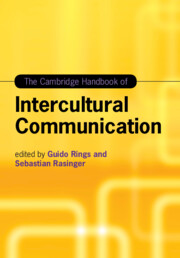Book contents
- The Cambridge Handbook of Intercultural Communication
- Cambridge Handbooks in Language and Linguistics
- The Cambridge Handbook of Intercultural Communication
- Copyright page
- Contents
- Figures
- Tables
- Contributors
- Acknowledgements
- Introduction
- Part I Introducing Intercultural Communication
- Part II Theoretical Approaches
- 5 Critical Intercultural Communication and the Digital Environment
- 6 From Shared Values to Cultural Dimensions
- 7 Towards Integrative Intercultural Communication
- 8 The Power of Literature in Intercultural Communication
- 9 Psychoanalytic Approaches to Memory and Intercultural Communication
- 10 Sociological Approaches to Intercultural Communication
- 11 Introducing Intercultural Ethics
- Part III Methods
- Part IV Application
- Part V Assessment
- Index
- References
8 - The Power of Literature in Intercultural Communication
from Part II - Theoretical Approaches
Published online by Cambridge University Press: 18 February 2020
- The Cambridge Handbook of Intercultural Communication
- Cambridge Handbooks in Language and Linguistics
- The Cambridge Handbook of Intercultural Communication
- Copyright page
- Contents
- Figures
- Tables
- Contributors
- Acknowledgements
- Introduction
- Part I Introducing Intercultural Communication
- Part II Theoretical Approaches
- 5 Critical Intercultural Communication and the Digital Environment
- 6 From Shared Values to Cultural Dimensions
- 7 Towards Integrative Intercultural Communication
- 8 The Power of Literature in Intercultural Communication
- 9 Psychoanalytic Approaches to Memory and Intercultural Communication
- 10 Sociological Approaches to Intercultural Communication
- 11 Introducing Intercultural Ethics
- Part III Methods
- Part IV Application
- Part V Assessment
- Index
- References
Summary
Birgit Neumann’s chapter focuses on the specificities of literature, i.e., its distinct poetic and affective potential, to create and negotiate concepts of self and otherness, which underlie processes of intercultural communication. This includes close readings of identity constructs in Andrea Levy’s Small Island (2004) and Teju Cole’s Open City (2011), which illustrate how literary representations may promote, trouble or problematize intercultural communication.
- Type
- Chapter
- Information
- The Cambridge Handbook of Intercultural Communication , pp. 136 - 154Publisher: Cambridge University PressPrint publication year: 2020

